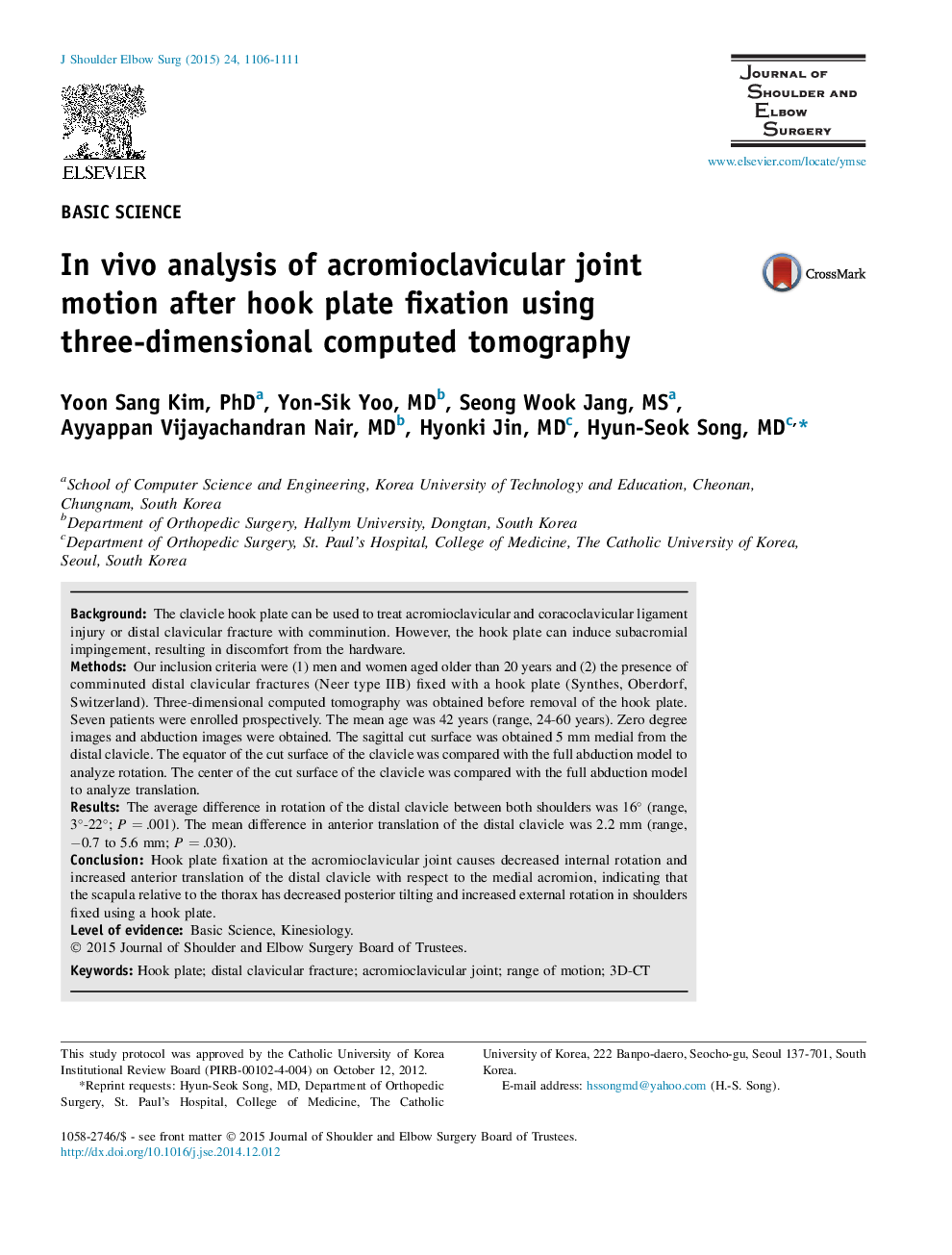| Article ID | Journal | Published Year | Pages | File Type |
|---|---|---|---|---|
| 4073395 | Journal of Shoulder and Elbow Surgery | 2015 | 6 Pages |
BackgroundThe clavicle hook plate can be used to treat acromioclavicular and coracoclavicular ligament injury or distal clavicular fracture with comminution. However, the hook plate can induce subacromial impingement, resulting in discomfort from the hardware.MethodsOur inclusion criteria were (1) men and women aged older than 20 years and (2) the presence of comminuted distal clavicular fractures (Neer type IIB) fixed with a hook plate (Synthes, Oberdorf, Switzerland). Three-dimensional computed tomography was obtained before removal of the hook plate. Seven patients were enrolled prospectively. The mean age was 42 years (range, 24-60 years). Zero degree images and abduction images were obtained. The sagittal cut surface was obtained 5 mm medial from the distal clavicle. The equator of the cut surface of the clavicle was compared with the full abduction model to analyze rotation. The center of the cut surface of the clavicle was compared with the full abduction model to analyze translation.ResultsThe average difference in rotation of the distal clavicle between both shoulders was 16° (range, 3°-22°; P = .001). The mean difference in anterior translation of the distal clavicle was 2.2 mm (range, −0.7 to 5.6 mm; P = .030).ConclusionHook plate fixation at the acromioclavicular joint causes decreased internal rotation and increased anterior translation of the distal clavicle with respect to the medial acromion, indicating that the scapula relative to the thorax has decreased posterior tilting and increased external rotation in shoulders fixed using a hook plate.
